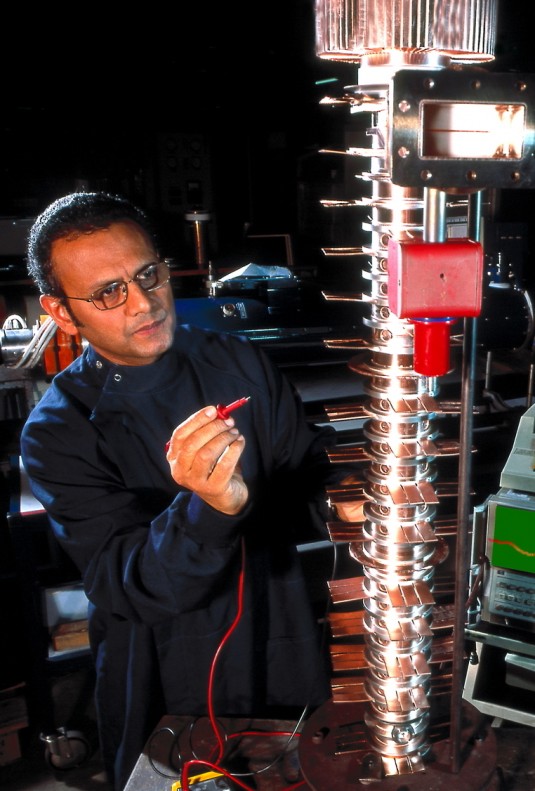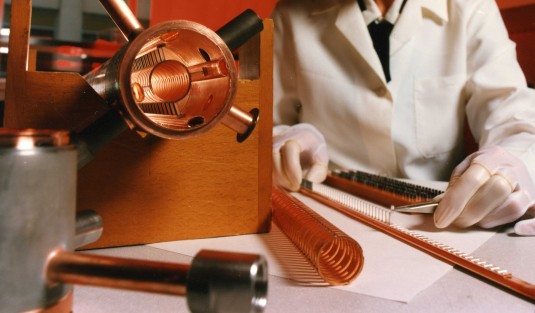Automated processes in Opera from Cobham Technical Services allows traveling wave tubes to be designed and analyzed in five minutes.
An automated simulation-based design cycle has become a fundamental part of the success of one of today’s leading designers of travelling wave tube (TWT) microwave amplifiers.
TMD Technologies produces a large range of TWTs, a core component of many radar and missile seeker systems, electronic counter measure (ECM) and electronic warfare (EW) systems. By using scripting tools built into Cobham Technical Services’ Opera electromagnetic design software, the company has created a custom tool that automatically builds a three-dimensional (3D) model of a new TWT, simulates it and analyzes the results, all within the space of around five minutes. This speed of design provides the engineering team with a means of rapidly creating highly-optimized solutions for new TWT applications, allowing the company to respond quickly and effectively to this largely project-driven business.

TMD is one of the oldest companies in the TWT marketplace, with roots dating from the early 1940s, when as the microwave tube research division of EMI Electronics it developed high power klystrons for the first airborne radars. Today, the company retains a leadership position in several TWT design segments including ring-loop and coupled-cavity types, and particularly in the higher-power parts of the market. The company’s ability to design specialized high-voltage low-noise power supplies required for TWT applications, and to provide integrated transmitter subsystems is another major factor behind the company’s recent growth.
Automation of the design process is critical, as simulation is the main means of understanding the effects of design changes on TWT performance. Although there are markets for standard TWT products, a large proportion of the business is application-specific and TMD often has to balance several competing design goals in order to produce the required characteristics. Along with frequency and amplification specifications, there are often severe weight, size, power consumption and heat dissipation targets for example, as systems might be installed on satellites or aircraft. The ability to design a TWT that is compatible with the voltage levels of an existing power supply is another common demand, as this can substantially reduce project costs and timescales.
Travelling wave tubes (TWTs) are vacuum devices that amplify by producing an electron beam and coupling it with a microwave frequency electromagnetic signal. Synchronization is achieved by means of a ‘slow wave structure’ which employs a geometry such as a helix, ring bar or ring loop to precisely delay the microwave signal by forcing it to meander back and forth.
The Opera-based electromagnetic design tool provides TMD with a powerful means of exploring the solutions to these design challenges. The tool has a library of generic parameterized models of TWT tube designs, containing unique intellectual property on the design of component parts of TWTs; all the engineer needs to start creating a custom TWT is to enter some of the model geometry parameters using dialog boxes, which takes only a few minutes. The package will then automatically simulate and post-process the results to provide custom high-level views of the resulting performance.

This process typically takes less than five minutes, so it is easy for TMD to modify the design parameters and repeat the analysis to locate the optimum solution within any chosen design space. TMD also has built in special features to the custom design software to improve the optimization process, such as making it easy for users to suspend simulation and change parameters on the fly, or to ‘bracket’ a design topology and then to create an interpolated data file that can be used to explore the intervening design space. Thanks to the highly automated design optimization, this phase of the total TWT design process can often be accomplished within a couple of days. TMD has also produced similar script sequences that partially-automate the design of the electron gun and magnetic focusing elements of a TWT.
One of the most recent applications for the automated design tool has been in the development of a groundbreaking microwave power module called PTX8400. The compact transmitter module provides 1 kW output thanks to a novel ring loop TWT offering very high gain. This combination of size and performance is setting a new standard for space- and weight-critical radar applications such as unmanned aerial vehicles (UAVs) and military helicopter platforms.
TMD has been using the Opera software suite from Cobham for over 10 years. The company utilizes many of the specialist electromagnetic design solvers developed by Cobham including ones for simulating charged particle beams, for static and time-varying magnetic field analysis, and for modelling thermal effects. The accuracy of the finite element analysis design software has been proven time and again for the company, by comparing actual measured results from the finished real-world products with the predictions obtained from the simulation models.





